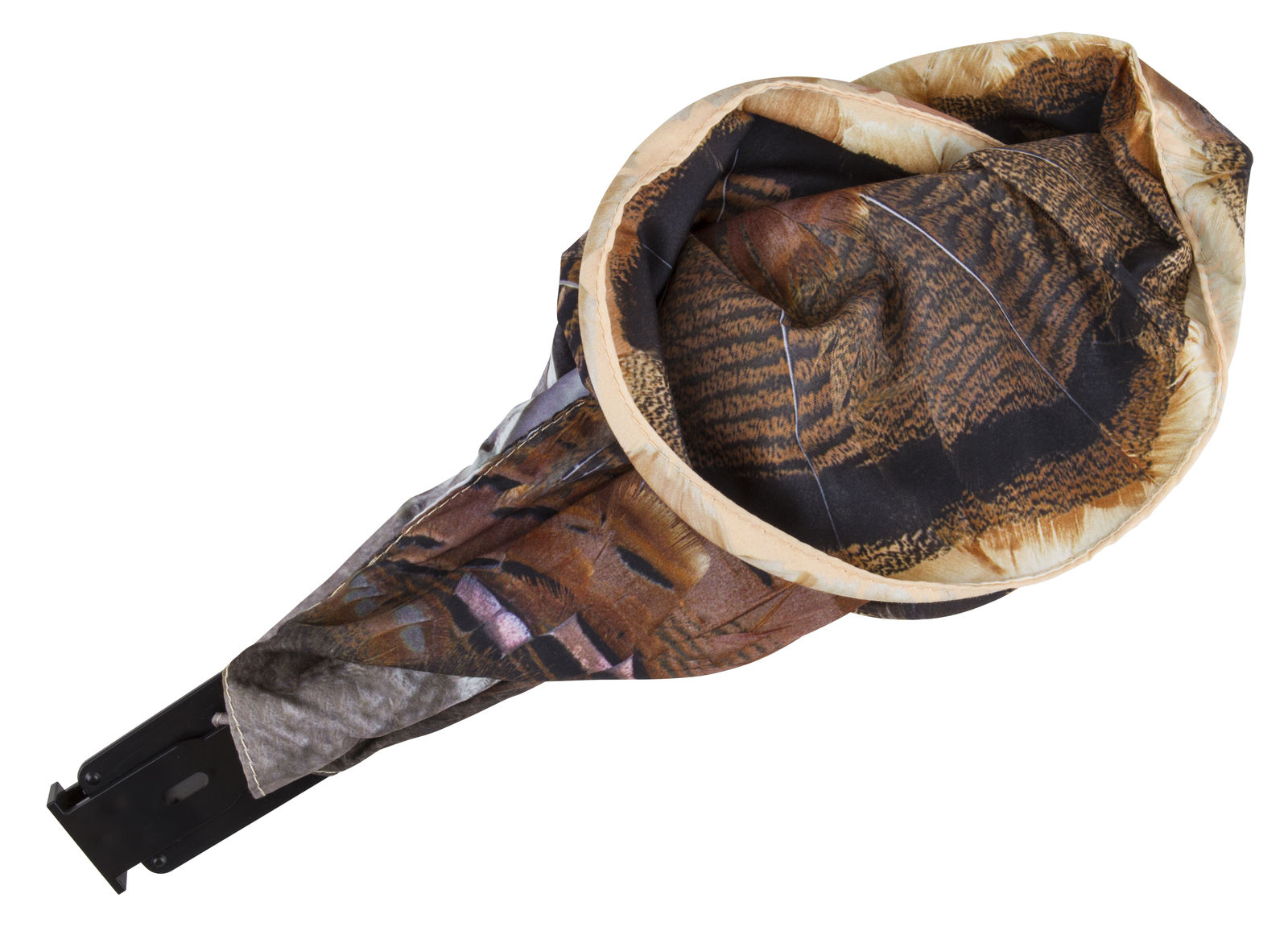A turkey fan, also known as a tail, is a distinctive characteristic of male turkeys. It serves as a visual display for mating and territorial disputes. While the fan is an impressive sight, sometimes it needs to be removed for various reasons, such as health concerns, feather management, or aesthetics. Removing a turkey fan requires careful preparation and execution to ensure the well-being of the bird. This comprehensive guide will provide step-by-step instructions and essential tips to assist you in successfully removing a turkey fan.

Image: www.flambeauoutdoors.com
Understanding Turkey Fan Anatomy
Before attempting to remove a turkey fan, it is crucial to understand its anatomy. The fan consists of a series of long, stiff feathers known as tail coverts, which overlap each other to form a triangular shape. The coverts are attached to the uropygial gland, which secretes an oily substance that helps waterproof the feathers. The fan is supported by the pygostyle, a small bone that extends from the spinal cord.
Preparing the Turkey
Proper preparation is key to minimizing stress and ensuring the turkey’s safety. Start by selecting a calm and controlled environment where the bird will feel comfortable. Gather necessary equipment, including sharp scissors, clean water, towels, and a carrier. Ensure you have a designated area for post-removal care, equipped with a shallow water bath for rinsing. Handle the turkey with a gentle but firm grip, avoiding any sudden movements that could startle it.
Removal Procedure
Begin the removal process by locating the base of the fan, where the coverts attach to the pygostyle. Using sharp scissors, carefully trim the outermost coverts, cutting as close to the base as possible. Avoid cutting too deeply or pulling on the feathers, as this can cause pain or damage to the uropygial gland. Continue trimming the coverts one row at a time, working inwards towards the center of the fan.
Once the outer rows are trimmed, gently lift the remaining coverts to reveal the pygostyle. Insert the tip of the scissors between the pygostyle and the covert base, and carefully snip the ligament that connects them. Repeat this process for all the remaining coverts, releasing them from the pygostyle. Avoid cutting into the pygostyle itself, as this can damage the bone.

Image: www.youtube.com
Post-Removal Care
After the fan is removed, inspect the exposed area for any bleeding. If minor bleeding occurs, apply gentle pressure with a clean towel to stop it. Carry the turkey to the designated care area and place it in the shallow water bath for 10-15 minutes. This will help clean and soothe the exposed skin. Use a small amount of mild soap to remove any residue or debris, but refrain from using harsh chemicals or excessive scrubbing.
Dry the turkey thoroughly with a soft towel and ensure it is warm and comfortable. Monitor the bird closely for any signs of distress or infection. Keep the exposed area clean and dry, and consult a veterinarian if any concerns arise.
How To Remove Turkey Fan
Conclusion
Removing a turkey fan can be a necessary and potentially rewarding experience if done correctly. By understanding the anatomy of the fan and following these comprehensive guidelines, you can effectively remove the fan while minimizing stress to the bird and promoting its well-being. Remember to prioritize proper care and medical attention to ensure a smooth and successful recovery for the turkey.